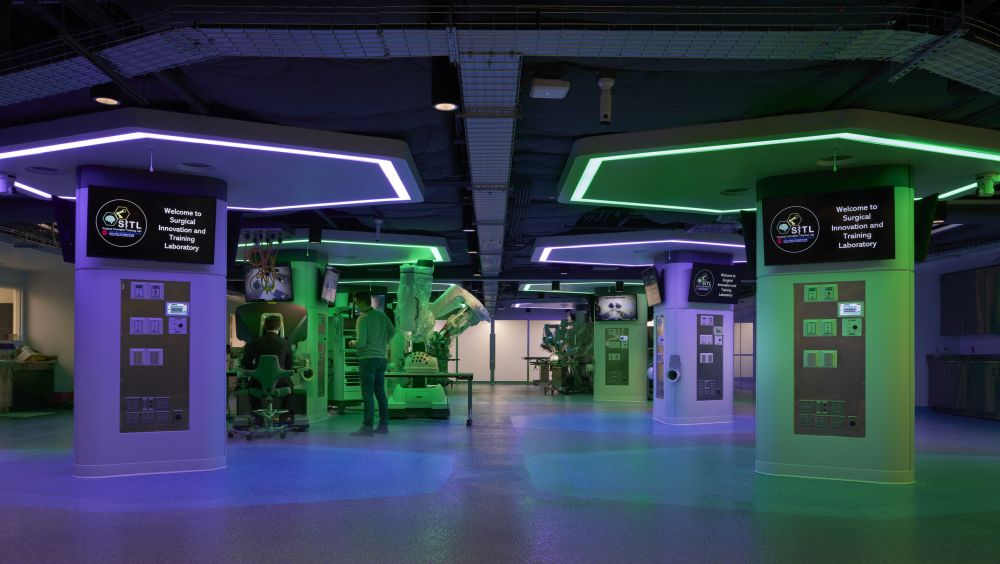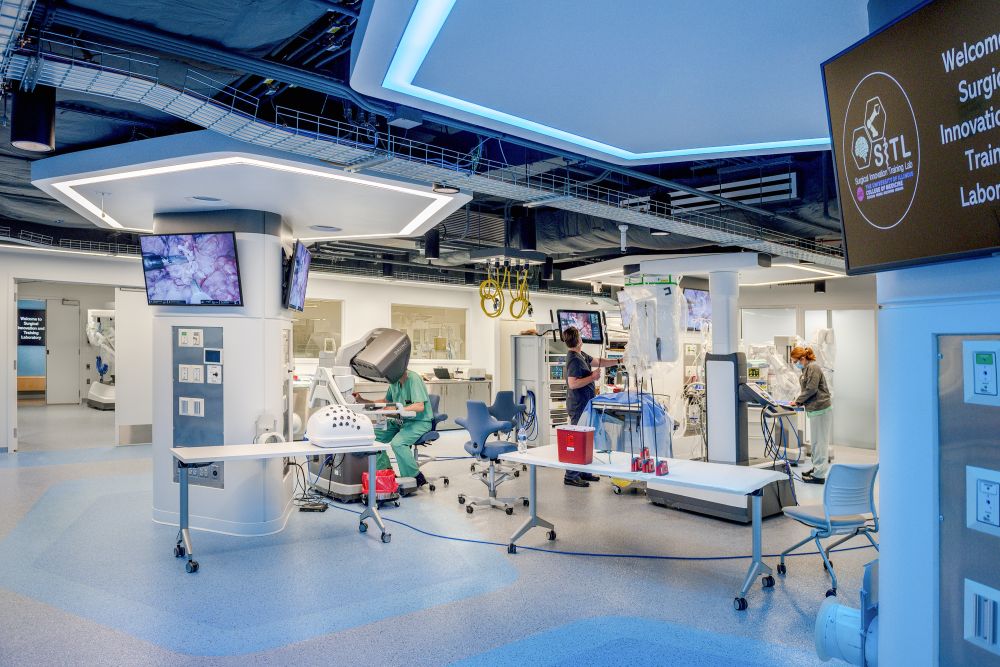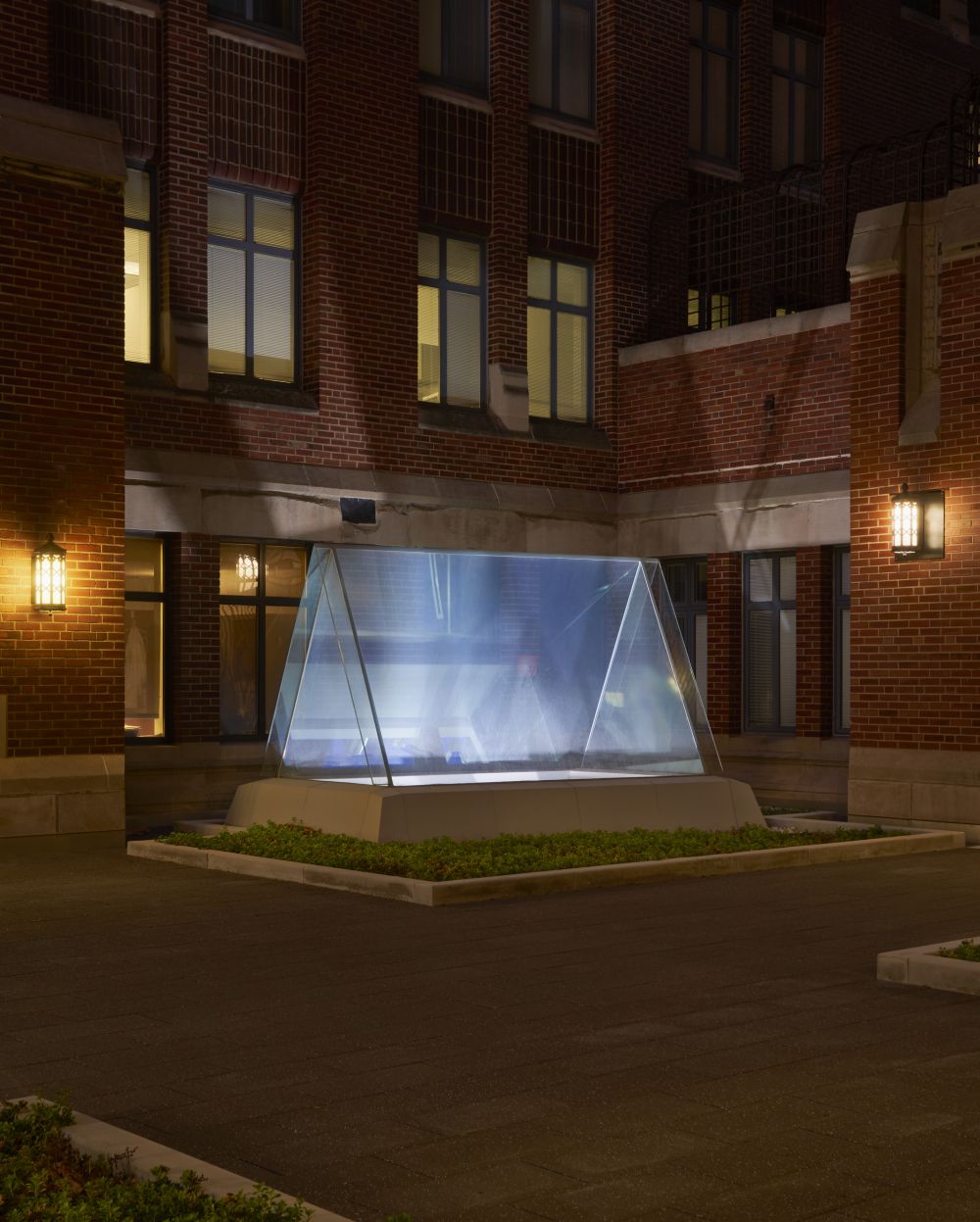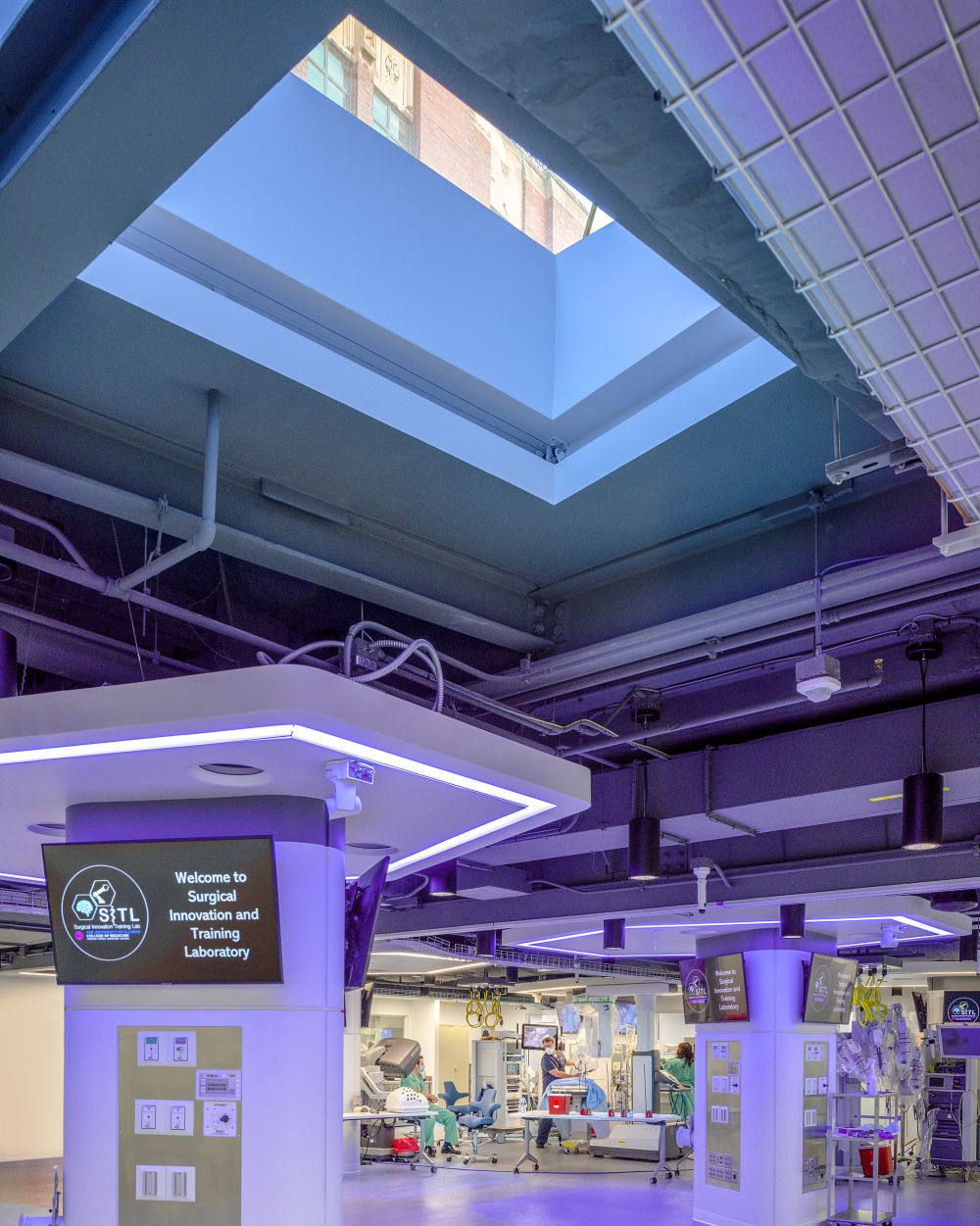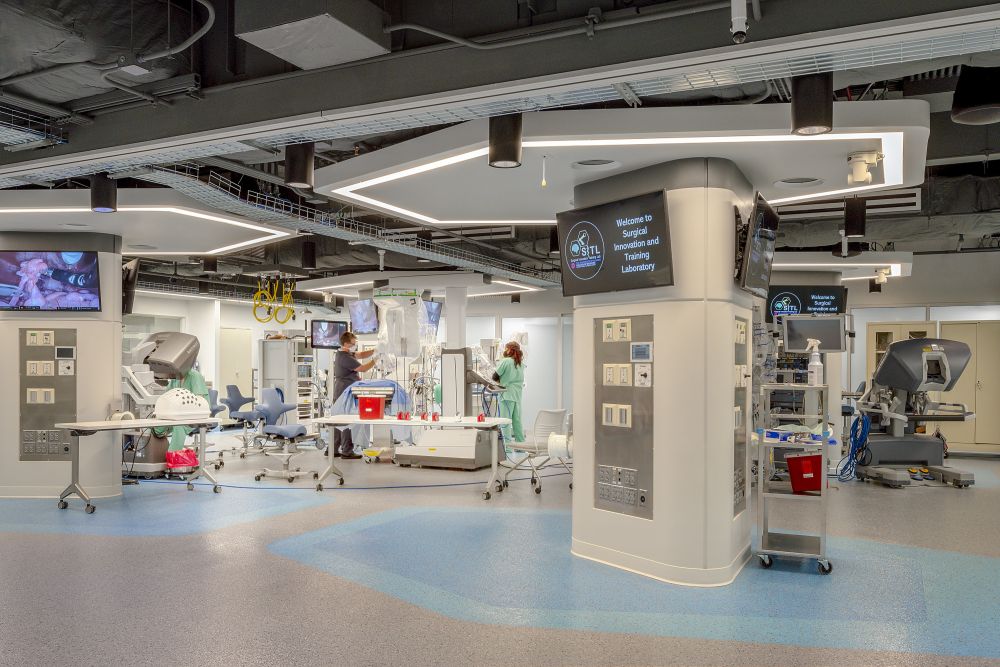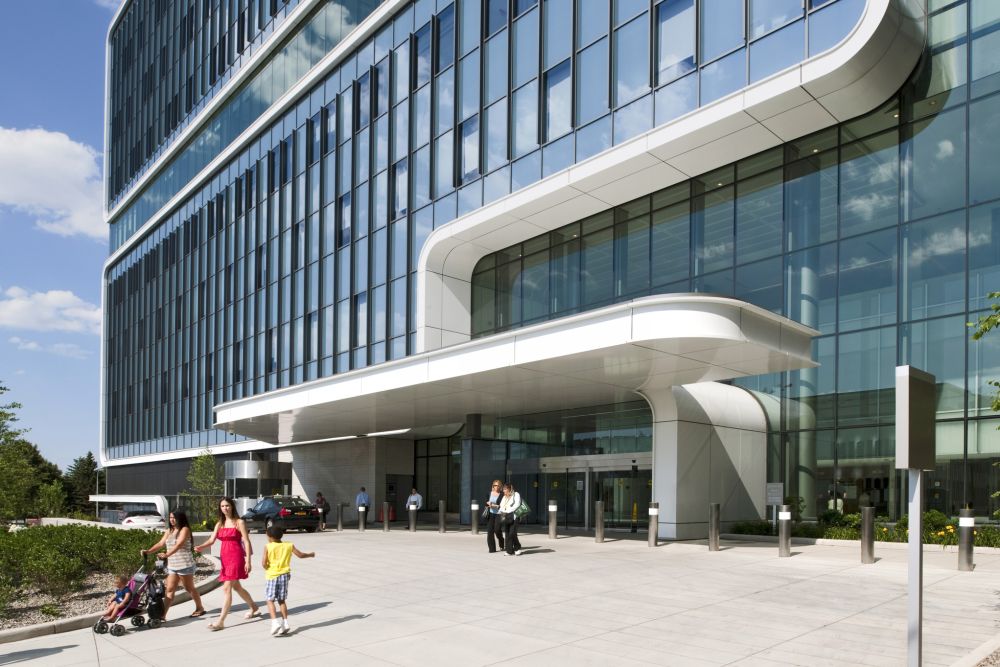Side X Side: Two unique perspectives on the game-changing UIC Surgical Innovation Training Lab
Erinn Connor
March 15, 2022
Social Sharing
Still in its relative infancy after opening in 2021, the Surgical Innovation Training Laboratory (SITL) at the University of Illinois at Chicago is reshaping surgery and improving lives.
Already, the lab has been a site for true innovation, spurring new surgical products, procedures and collaboration. And, the project has been celebrated by the health and design community including recognition by Healthcare Design, Fast Company and Freethink among others.
In the early design phases, UIC challenged our team to create a space that allows for education using today’s latest technologies and also includes a space for “out of the box” thinking, experimentation, research, collaboration and discoveries. Carlos Amato, lead designer on the project, used the flexibility of theater design as inspiration. Theater stages are designed with behind-the-scenes storage spaces for quick set and costume changes. The centerpiece of the SITL is the Innovation Lab, which connects a traditional surgical space and an experimentation research garage. Adjacent storage spaces allow for adaptability and flexibility—equipment can move in and out to create different modes of use.
To better understand the project, its vision and its initial ROI, we asked Carlos and Dr. Liohai Leo Chen, director of the SITL, each a series of the same questions—looking for their distinct perspectives.
How does the theater inspiration and the subsequent design of the lab inspire innovation in the lab?
Carlos: Just as theaters have support spaces adjacent to the side and behind stage for quick scene changes, set pieces or new costumes, the SITL has similar spaces that allow surgeons and students to swap out different pieces of equipment to test them out, see what might work well together, or practice a complex surgery that requires extensive equipment and personnel. The support spaces are adjacent to the main lab space so little to no time is lost for these transitions and the creative possibilities are seemingly boundless.
Dr. Chen: The theater design makes the lab very flexible and adaptable. In many cases, we host a general surgery training on one day with da Vinci robots, and then quickly switch to a neurosurgery or a spin surgery training event the next day by moving the da Vinci robots to the staging room and rolling out the microscopes to the lab. This could not happen without the theater design.
How do you see this being the model going forward for similar surgical programs?
Carlos: I remember when I first met with Dr. [Pier] Guilianotti [UIC surgical chair], and he said, “We’re not designing a space here, we’re designing the surgeon of the future.” We were charged with designing the most advanced, future-focused, robotic simulation center anywhere in the world.
We were able to find success through extensive collaboration with surgeons, educators and others all imagining the future frontiers of surgery and what we should be reimagining and training for now. The SITL is also meant to pioneer the future “surgineer” and “surgineering,” the future surgeon being in addition to a clinician, a computer scientist and a medical technology engineer and inventor. We see surgery moving in this direction—towards being multi-disciplinary and having cross-market skills.
Dr. Chen: The flexibility, adaptation and futuristic features of the lab should be the model for future academic medical institutions and surgical teaching programs. In fact, there are already institutes visiting the lab with plans to “borrow” the idea for their future lab construction.
What are some of the goals for the SITL and what has already happened in the lab since it’s opening?
Carlos: Collaboration is in this project’s DNA and I know there have been many connections made already on campus and with major industry players. The whole space is designed with the premise of multi-purposing, multitasking, reconfiguration and adaptation of its spaces, and to be used by students, teachers and technology developers alike. This characteristic brings people together for innovation, discovery and problem solving. I’ve heard of multiple surgical robotics companies testing their products in the space as well.
Dr. Chen: The surgical innovation will enable personalized surgical treatment and significantly improve patient outcome, thus further enhancing the quality of human life. Companies have been putting the most advanced technologies ranging from new robots, instruments, imaging systems, to novel surgical models and supporting systems into the lab to train the next generation of surgeons.
The lab also hosts premarketing surgical devices/systems for future surgical innovation. We are testing equipment and surgical procedures for patients with Body Mass Index (BMI) over 30, a population that previously was not eligible for certain surgeries without weight loss. The lab is poised to become a surgical innovation hub for years to come.
